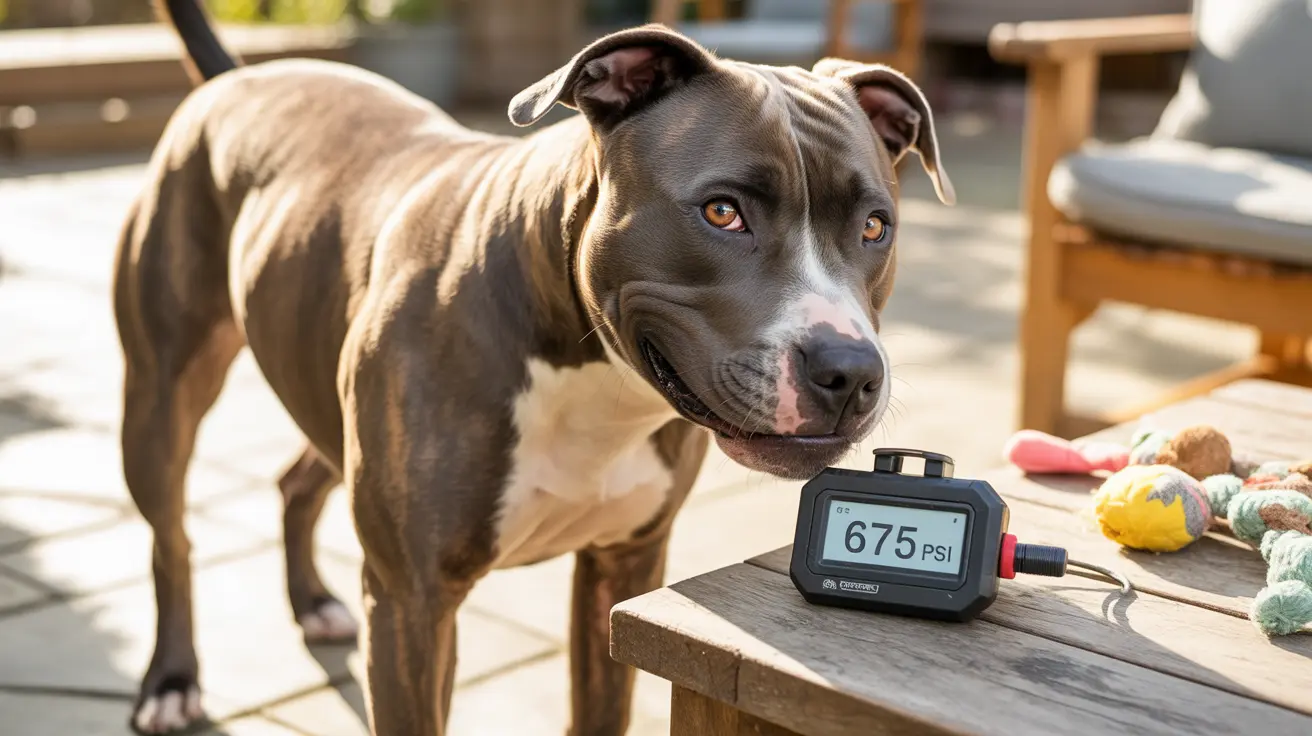When discussing pit bull bite force PSI (pounds per square inch), it's crucial to separate scientific facts from common misconceptions. Many people believe pit bulls possess an extraordinarily powerful bite, but research tells a different story. Let's examine what the evidence actually shows about pit bull bite force and put these numbers into proper context.
Recent studies and veterinary research indicate that pit bull-type dogs typically demonstrate a bite force of around 235 PSI, which places them in the same range as other medium to large-sized breeds. This measurement challenges many widespread assumptions about pit bulls having exceptional bite strength.
Understanding Pit Bull Bite Force Measurements
The term "pit bull" itself creates challenges when measuring bite force, as it encompasses several breeds including the American Pit Bull Terrier, American Staffordshire Terrier, and Staffordshire Bull Terrier. This diversity makes it difficult to establish a single, definitive bite force measurement.
Scientific measurements have consistently shown that pit bull-type dogs exhibit bite forces comparable to similarly sized breeds:
- American Pit Bull Terrier: ~235 PSI
- German Shepherd: ~238 PSI
- American Bulldog: ~305 PSI
- Rottweiler: ~328 PSI
Factors Affecting Bite Force Measurements
Several key factors influence bite force measurements in all dogs, including pit bulls:
- Head size and skull structure
- Individual dog's age and health
- Testing conditions and methodology
- Dog's motivation during testing
- Dental health and jaw condition
Comparing Bite Forces Across Breeds
When examining bite force across different breeds, larger guardian breeds consistently show higher PSI measurements than pit bulls:
- English Mastiff: ~552 PSI
- Cane Corso: ~700 PSI
- Kangal: ~743 PSI
These comparisons demonstrate that pit bulls actually fall into the middle range for bite force among medium to large dogs, contrary to popular belief.
Understanding Bite Risk Beyond PSI
While bite force is one metric, it's not the primary factor in determining a dog's risk level. More important considerations include:
- Training and socialization
- Owner responsibility
- Environmental factors
- Proper supervision
- Individual dog temperament
Debunking Common Myths
Several myths about pit bull bite force persist despite scientific evidence:
- The "locking jaw" myth: Pit bulls have no special jaw-locking mechanism
- Strongest bite myth: Larger breeds consistently show higher PSI measurements
- Inherent danger myth: Behavior and training matter more than bite force
Frequently Asked Questions
What is the average bite force (PSI) of a pit bull compared to other dog breeds?
Pit bulls typically have a bite force of around 235 PSI, similar to German Shepherds (238 PSI) and significantly less than larger breeds like English Mastiffs (552 PSI) or Kangals (743 PSI).
Why do bite force measurements for pit bulls vary so much across different studies?
Variations occur due to differences in testing methodology, equipment used, individual dog characteristics, and the fact that "pit bull" encompasses several breeds and mixed breeds.
Does a higher bite force mean a dog breed, like pit bulls, is more dangerous?
No, bite force alone doesn't determine danger level. Factors like training, socialization, and responsible ownership play much more significant roles in dog safety.
How is bite force measured in dogs, and why is it difficult to get precise numbers?
Bite force is measured using pressure sensors and specialized equipment. Precise measurements are challenging due to variables like dog motivation, testing conditions, and individual differences in anatomy and health.
What factors besides bite force influence the risk of a dog bite from pit bull-type dogs?
Key factors include training, socialization, supervision, environmental conditions, and owner responsibility. These elements typically have a greater impact on bite risk than bite force measurements.
Understanding pit bull bite force PSI helps dispel myths and promotes more informed discussions about these dogs. While they possess significant strength, like many medium to large breeds, their bite force is not exceptional and shouldn't be used to characterize the entire breed group.






